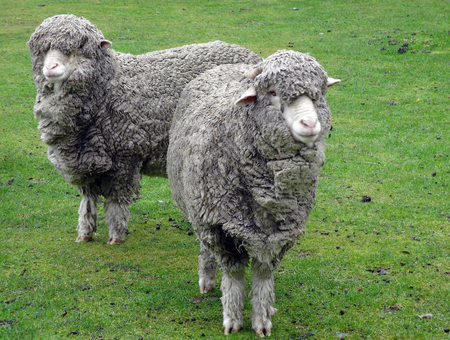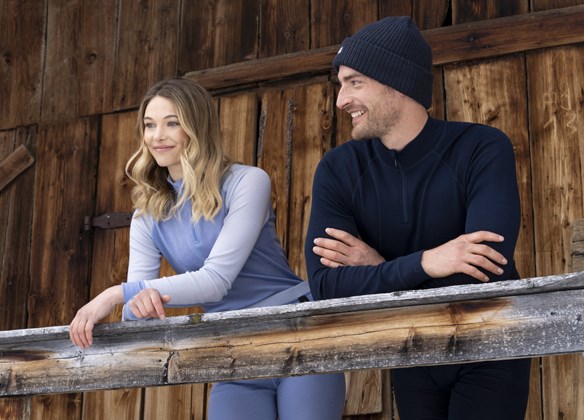Free Info For Choosing Merino Wool Base Layers For Hiking
Wiki Article
What Is The Difference Between Merino Sheep And Other Types Of Sheep? Merino Sheep Differ From Other Sheep Breeds?
Merino sheep is different from other varieties. Merino sheep also have fine wool. Merino's wool is softer and finer in comparison to other sheep breeds. Merino wool has been highly valued for its warmth, versatility and ease of use.
Adaptability- Merino sheep are highly adaptable to different conditions and climates. They are able to live in cool and hot climates.
Resilience- Merino sheep are famous for their strength and toughness. They can withstand harsh conditions in the weather, and are resistant to many common diseases of sheep.
Fertility- Merino lambs have a high fertility rate, and can produce multiple offspring out of one pregnancy.
Merino sheep have a unique way of grazing which helps them to keep their health and well-being. They are more careful and selectively, which allows them to stay clear of overgrazing or toxic plants.
Breeding- Merino sheep are selectively bred to produce high quality wool. This has resulted in an array of Merino sheep breeds, each of which has its own distinctive characteristics and qualities.
Merino sheep are sought-after by their exquisite wool and apprehensiveness. They are a significant resource for the wool industry and are highly respected by breeders and farmers across the globe.

What Is The Distinction Between 3/4-Length, Long-Sleeve, Hooded And Zip Merino Wool Base Layers?
The different Merino wool base layers are available in a variety of lengths, which include 3/4, long sleeves, zip-necks, and hooded. They all offer different features and advantages. This article will highlight the differences among the four kinds and assist you choose the right 3/4 Length Merino wool base layer. They are made to offer warmth, comfort , and support to the lower body , without adding bulk. This base layer can be worn under pants or shorts and is perfect for mild to cool temperatures. They're a great option when you need a little extra warmth but don't require long-length base layers.
Long Sleeve Merino wool layers with base layers that are made of long sleeves are designed to offer warmth to the upper body. They are available at different weights and can be used in colder conditions. These base layers, that have long sleeves, are perfect for any activity of low to moderate intensity where you might need some extra warmth.
Hooded Merino wool base layer are made to provide warmth and protection from the elements. These layers often come with a fitted jacket which can be worn over the helmet. When you're doing something that could expose your body to wind or cold, hooded bottom layers can be a great choice.
Zip-neck Merino wool base layers made from Merino wool are perfect to control temperature and allow air circulation. They typically come with a collar that is zippered and can be pulled upwards or downwards according to the conditions. Zip-neck tops are ideal for activities where you may need to keep your body temperature in check rapidly, like during high-intensity activities.
Take into consideration the weather conditions and degree of activity you're participating in when choosing the right Merino wool base layer. 3/4 length base layers work well in mild to cool temperatures Long sleeves are ideal in cooler temperatures. Hooded bases layers can provide additional protection against windy or cold winds. For any activity that requires you to rapidly regulate your body temperature, zip-neck base layers can be a good option. Also, think about the size of the base layer, and ensure that it is comfortable and allows for a full range of movement. Go click here for best base layers info for more tips.

How Do You Find The Ideal Base Layer Of Skis To Mix Merino Wool And Himalayan-Yak Wool?
When deciding on the best base layer for skiing that combines Merino wool and Himalayan Yak Wool, there are several factors to consider. There are a few important aspects to think about Weather conditions: Take into consideration the temperature and conditions in which you will be skiing. If it's very cold, it may be best to opt for a base layer with more insulation, such as one made of Himalayan Yak Wool. Lighter Merino wool base layer might be suitable for milder temperatures.
Activity level - Think about your level of activity, and how much sweat you generate. Merino Wool, which has great moisture-wicking characteristics, might be a better choice for those who sweat often.
Comfort: Choose a soft base layer. Look for bases that are made to be able to move along with you and allow for an entire range of movement. You should avoid any base layers that feel restricting or restricting or. This can cause discomfort and limit mobility.
Personal preference: The selection of the top base layers is dependent on the person. Some prefer a more thick layer of insulation, while others prefer a lighter one. Try different combinations to determine the most efficient solution for your requirements.
The ideal combination of Merino wool and Himalayan Yak wool to make ski base layers depends on your preferences and the conditions under which you'll be skiing. When choosing a base layer, be aware of the weather conditions, your activity level and individual preferences. This will help ensure that you stay dry and comfortable while you are on the slopes. Go click here for best hiking mid layer for site examples.

What Are The Other Fabrics That Are Available For Yak Wool And/Or Merino Ski Clothes? Are They Better?
There are several alternative fabrics in addition to Merino wool and Himalayan yak wool used in ski gear, however they aren't as efficient in keeping you warm, dry, and comfortable when you're on the slopes. Here are a few alternatives to these fabrics, and some of the reasons why they could be less than desirable. Cotton. Cotton is a standard fabric that is used for clothing however, it's not the best choice for skiing. It is extremely absorbent and can retain moisture. This can result in being cold and wet. Also, cotton is not well-insulated, and it won't be able to keep you warm in colder temperatures.
Polyester- Polyester is a synthetic fabric that is widely used in ski clothing. Polyester is quick-drying and moisture-wicking, but it doesn't provide as much warmth and insulation like Merino or Himalayan wool. In addition, some are finding polyester to be less breathable and less comfortable than natural fibers.
Nylon-Nylon, a fabric made of synthetic material, is well-known for its toughness and resistance to scratches. Nylon-Nylon can be used as ski clothes, however it doesn't provide much warmth or insulation. Furthermore, nylon isn't as permeable as natural fibers like Merino wool. This may make it uncomfortable to wear for long periods of time.
FleeceFleece Fleece is a well-loved layering fabric for skiers, is also a well-liked choice. Although it offers warmth and insulation, it isn't as effective in comparison to natural fibers such as Merino Wool and Himalayan Yak Wool. Some people find fleece to be less breathable, and more likely to trap water more than natural fibers.
There are several alternative fabrics to Merino wool and Himalayan yak wool that can be used for ski gear, they may not be as effective in keeping you dry, warm, and at ease when you're on the slopes. Merino wool as well as Himalayan Yak wool are the best options for ski clothes because they are warmer, provide better insulation, and moisture management.